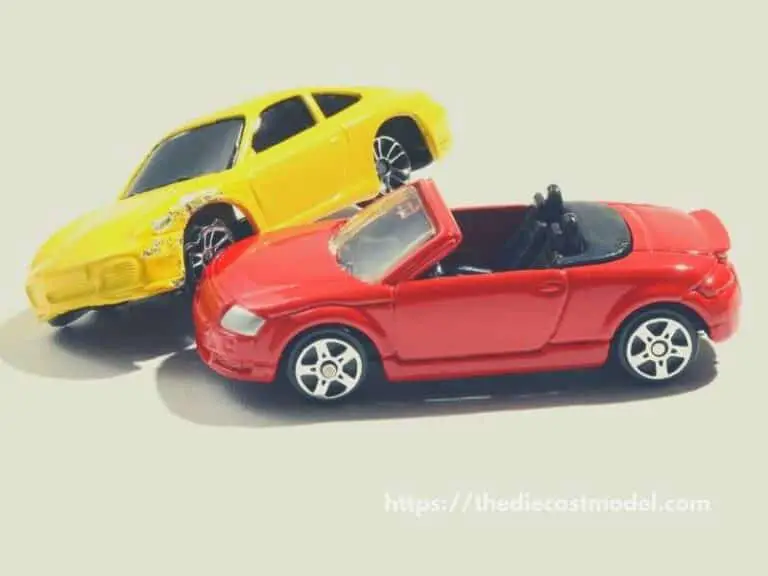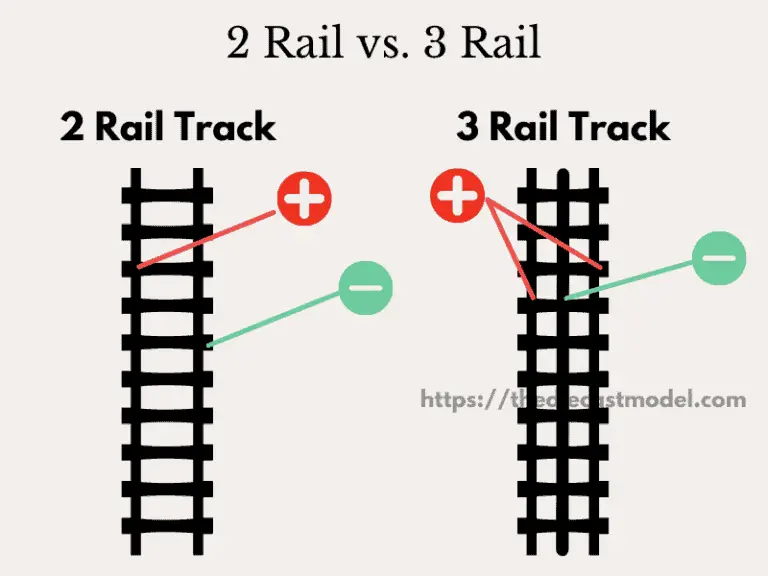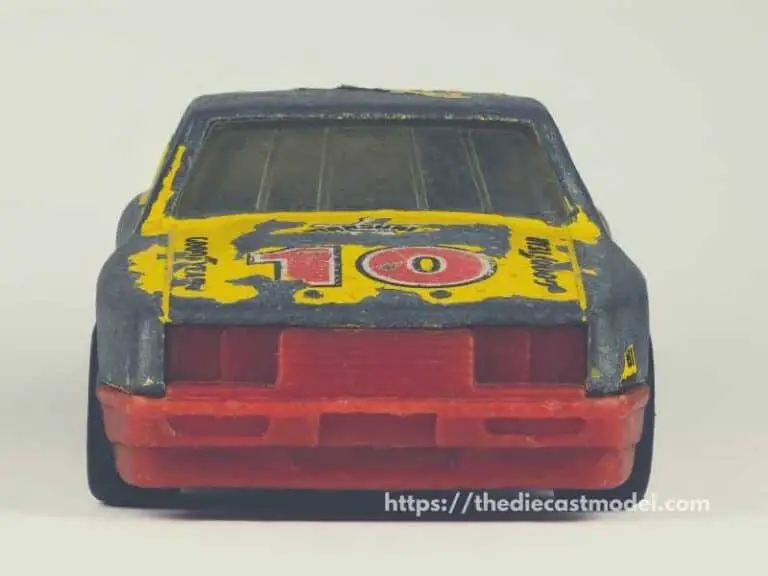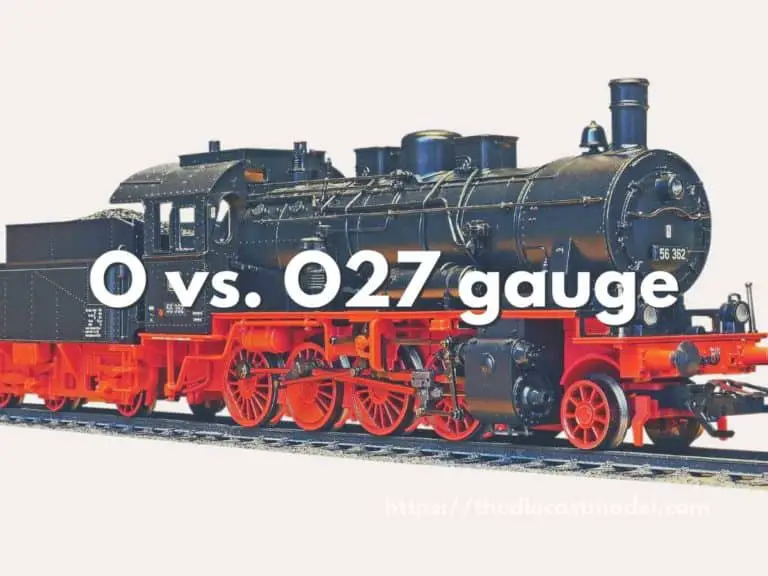Diecast Models: What are they made of?
If you are a diecast car lover or want to start collecting diecasts, chances are this question what is a diecast model made of came to your mind. What material is used to manufacture model cars matter a lot to collectors, and if you are a diecast model car collector, you may wonder what kind of material is used.
Diecast model cars are made of an alloy of zinc and aluminum metal. These metals are referred to as Zamak, meaning they are the metals used in the manufacturing of toys or models. Using the diecasting technique produces sturdy models at a cheaper price compared to other metal types.
In this blog post, you’ll get to learn about the material used to manufacture the diecast model cars. Besides, you will learn about the diecast car and history to understand how they were manufactured in the 19th century. I will also discuss rusting and corrosion which is a very important aspect of collecting. Before diving into what the diecast model is made of, let start with understanding what diecast models are.
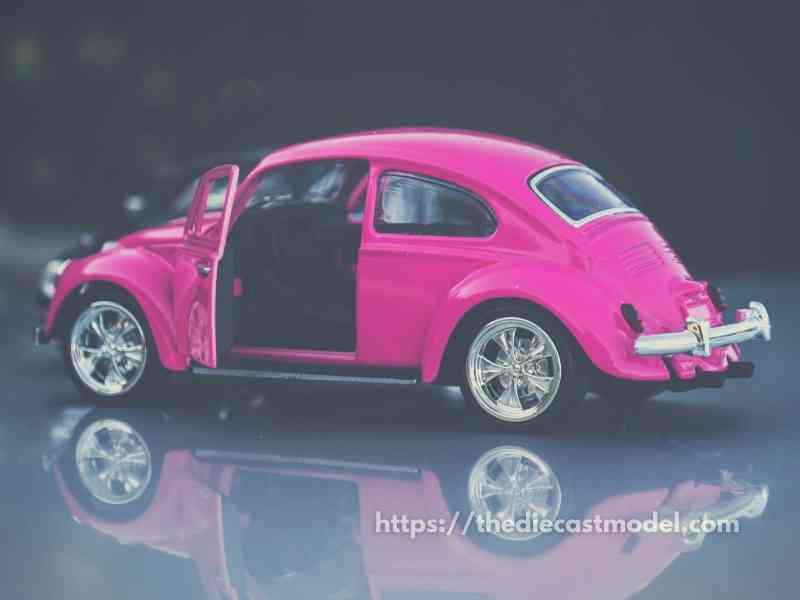
What are diecast models made of?
Diecast models are made of Zamak which is an alloy of zinc and aluminum. The combination of these two metals produces a model that is not only cheap but also sturdy. Another advantage of this metal combination is that it prevents rust in the model.
Diecast models are made through the diecasting method.
It is a process that involves forcing molten metal into the die leading to holding of the shape and form of the desired diecast model.
The process requires high pressure to fill the die fast.
The pressure is important as it helps to fill the entire cavity before the cast solidifies.
The die casting method is deemed to be an effective way to mass-produce diecast models, and at the same time, there is consistency and maintenance of quality.
Currently, there is a newer method in diecasting known as resin diecasts. I have an article breaking down resin diecast and their difference from the traditional diecasting we are talking about. Here is the link: Resin vs Diecasts: What’s the difference
Let’s first discuss what exactly are diecast models.
What are diecast models?
Diecast models refer to miniature replicas including cars, trucks, motorcycles, aircraft, trains, and so much more.
These types of models are made through the metal casting method or die casting. The material used in the casting method is mostly made of zinc, lead, or aluminum alloy.
Diecast model cars are scale models featuring real vehicles but on a small scale, and they come fully formed as a single piece.
Model cars are not like the usual plastics toys.
They are high quality with details, and they have a longer shelf life. These features make collectors share their diecast collection with other generations.
That’s why you can still see the 1960s Hot Wheels even if they’re already 60 years old.
And that’s why collectors love collecting these models.
For a Hot Wheel collection guide, I also have an article you can check. Here it is: Are Hot Wheels worth collecting?
If you want to add a diecast model car to your collection, different brands have their diecast models featuring different real vehicles, but all are made using the diecasting method.
Feel free to browse numerous brands on my website that uses the diecasting method. For finding the best one, I actually made a survey on a community with 24,300 collectors to find the best brand for diecast models. Here is the article if you’re interested: Which diecast car brand is the best? A survey from a community of 24,300 collectors
History of Diecast Models
For a better understanding of diecast models, let look at how they came about.
The creation of the diecast model is traced way back to the 19th century.
During the 19th century, children used to play with model trains as trains were used as means of transport before the invention of cars.
It is after the invention of cars also during that century which led to demand for diecast models.
The toy manufacturers of that time realized there was an increase in demand for diecast models featuring the invented cars, thus increasing the manufacturing of diecast models featuring the latest adult technological innovations.
It is more than 120 years since the first diecast model was manufactured, and children from all over the world continue to play with these grown-ups replicas.
Besides, some collectors have been collecting these diecast casts for display in their cabinets.
The earliest manufactures of diecast models were Corgi and Meccano.
These two brands manufactured diecast model cars featuring basic and small-scale care and truck bodies. These models had wheels, but there was no interior detail.
In these classic diecast models, the material used was either lead or zinc alloy.
These models were prone to zinc pests because of the impurities in the alloy resulting in casting to crack. It is why it is rare to find diecast models manufactured in pre-world war II standing in good condition.
Modern diecast models
The ideal to manufacture diecast models still exists today, but more manufacturers come in different variations.
In most cases, these diecast models feature actual vehicles. Still, others are based on fictional vehicles, meaning the manufacturer came up with the idea.
The modern diecast models differ in terms of the scale there are those so tiny, like a matchbook, while there are other large as you can imagine.
The details in a modern diecast car included the color that is loyal following the actual paint job of a vehicle, a wider range of moving parts, improved operating equipment, individual customizations, and more.
Most of these collectors are children who like playing with automobiles and are unconcerned about the amount of money of their replicas.
Some collectors, both young and old, make an effort to maintain their diecast vehicles in mint condition, often refusing to take them from their original packaging in the hopes of increasing their value over time.
Does Diecast Rust?
Diecast won’t rust because it is made from an alloy of zinc and aluminum. Zinc and Aluminum metals don’t actually have the ability to rust because rust actually came from a metal called Iron which is not used with the diecasting technique. Furthermore, zinc alloys are actually corrosion resistant.
Diecast is a zinc alloy, aluminum, and magnesium, so it will not rust like iron.
Every zinc-based alloy has excellent corrosion resistance; they only have somewhat different effects than aluminum-based alloys.
Although aluminum can heal itself, zinc eventually decomposes and degrades over time.
Wrapping up
If you have been searching to know what diecast models are made from, know you know.
Diecast models are among the model’s cars that collectors search.
Mostly they feature actual vehicles, and some are detailed to the extent of having an engine or moving parts such as wheels and doors.
These, among other features, are the ones that attract collectors.
How the diecast models were made in the 19th century is different from how manufacturers produce them today.
The modern diecast models are made from metal, plastic, or a combination of both.
It is rare to find those 19th diecast models in good condition, even though some were made entirely using metal.
Different brands with different features produce diecast models, which are available today in the market.
As a collector, you need to know what you are looking for in a diecast model as they vary. Some manufactures produce small scale while others are large scale.
Additionally, some are keen on details while other is not but on the aesthetic features.

“Only the things I love”
thediecastmodel.com is reader-supported. When you buy through links on the site, I earn an affiliate commission.
So, here are the things I love when taking care of my Diecast Models.
Cleaning the Models
The first we are going to talk about is cleaning the models.
Removing Dust
- Air Brush – For me, this is the best since it not just removes dust but you can use it in painting/clear coating.
- Air Duster – This is a good alternative to Airbrush
- Normal Brush – If you are short on budget, you can use a normal brush. However, make sure that the brush has soft bristles because there are some hard brushes than can cause scratches. That’s why I recommended a good brush that can do the job properly.
Cleaning and Shining Hacks
Well, here are some of my cleaning hacks for removing scratches, oxidation, and so much more.
- Removing Decal Adhesive – Use Goo Gone on those hard-to-remove decal adhesives. It works fast and works like charm!
- Waxing and Polishing – Here is something a lot of people don’t know. Waxing protects the clear coat and paint while polishing shines the model. Instead of buying it separately, use a 2 in 1 to save money. Get this instead.
- Beginner Wax – The wax I recommended earlier is good and provides the best results based on my experience. But a beginner might have a problem especially if they’re not good at applying wax. Solid wax reaching hard to reach surface can be hard to remove. You have two choices here. One is to use a qtips to reach those surfaces, another is to use a liquid wax I recommended.
- Cleaning Wheels, Rubber, Plastic – Do not forget that rubber and plastic surface are quite different, especially in the cleaning process. Just wiping it down won’t do the job. That’s why I use Meguiar’s Vinyl and Rubber Cleaner and Conditioner. Works like charm!
- Make the Wheels Shine! – Making our models look good won’t be complete without tiny details such as shiny wheels! Do not forget this because however small this is, the difference can be as big as night and day.
- Remove Scratches Easily – Tiny scratches are not the end for your model. Here is a simple trick I’ve been using to make my models look scratch-free even without repainting. Use T-Cut.
Painting the Models
Painting Tools
Make sure when you paint models, have these ready.
- Tape – A tape is important if you are painting a straight line. Furthermore, it will prevent your paint to scatter on other parts. I recommend Tamiya Tape since it is really made for models. Furthermore, they stick really well preventing paint splatters.
- Brush (Beginner) – Find a good set of brushes to paint your models. Of course, you can opt for an airbrush but it’s quite expensive.
- Airbrush (Intermediate/Expert) – This will yield a significantly better result than an ordinary brush because you can easily spray the paint evenly. I recommend this if you know what you’re doing.
- Stand(Optional) – Stands are good because it can be hard to manually hold the models while painting. It is optional but in my opinion, the price is well worth it for the comfort it gives.
- Drop Cloths – Drop Cloths will protect your surroundings from the paint.
- Primer – The most common beginner mistake I see is painting models without any Primer. A primer will prevent imperfections such as bubbles or paint not sticking to your models. It is a small price to pay for quality results.
- Clear Coat – A clear coat will protect the paint of your models. This will make the paint last longer. Also, it is the one responsible for making your models shine.
Paints
Of course, you can’t do painting properly without paint. So here are the ones I recommend.
- Acrylic Paint – Good for beginners because it dries quickly. However, it doesn’t produce results as good as enamel paint.
- Enamel Paint – Provides a good quality finish and longer-lasting paint. However, it takes longer to dry and requires expertise to use.
Model Maintenance
Model Storage
- Simple Wood Cabinet – While it doesn’t let you display your models, wooden cabinets are good storage for these models. For one, they are not heat conductors which means that the temperature inside will remain constant and remain cool. Furthermore, they prevent light from reaching the models which can cause oxidation.
- Clear Cabinet with Lock – If you want to display your models, then I recommend this. It closes so dust won’t easily get to your models. I also recommend you don’t put more than 1 model in each compartment since metals are good conductors of heat.
Model Photography
So you want to show off your models to others? Well, I got you covered.
Here is my beginner-friendly model photography tutorial that teaches everything from taking pictures to the editing process.
You will also see me doing hands-on photography in that tutorial.
Here is the link: How to Take Pictures of a Diecast Model or Model Kit | Helpful Illustrated and Video Guide
Source:

